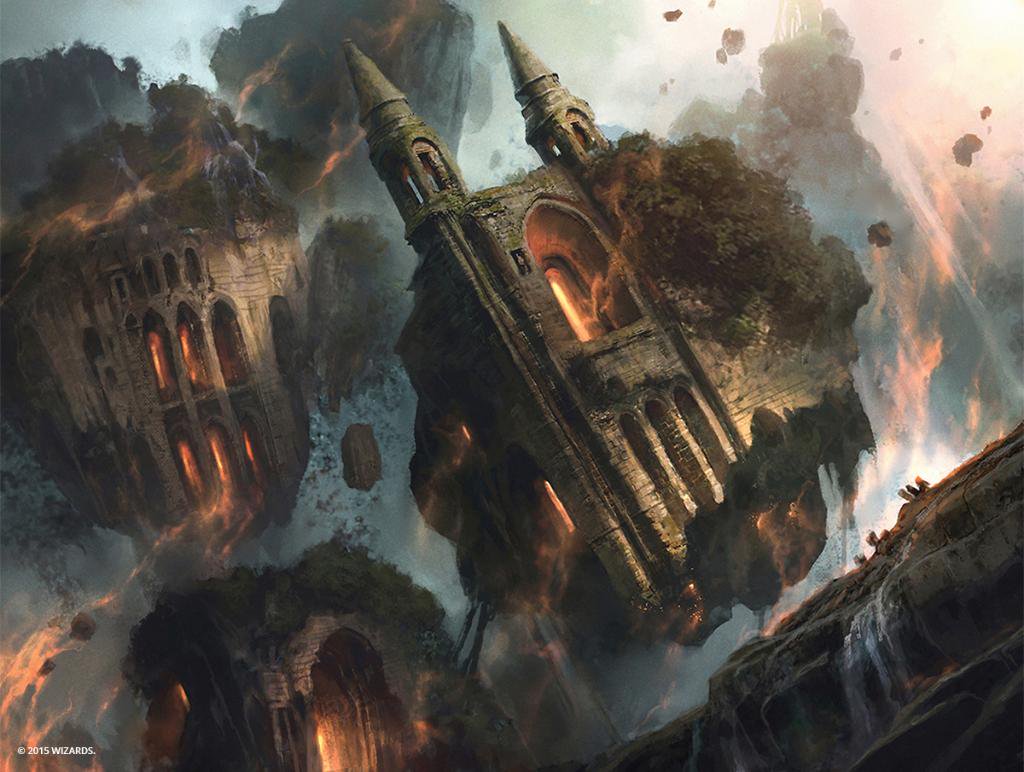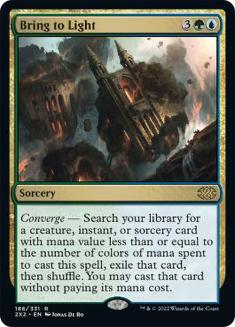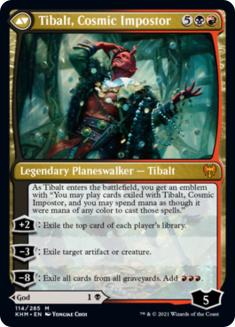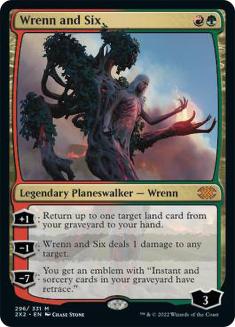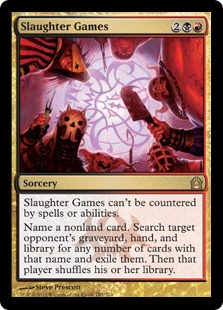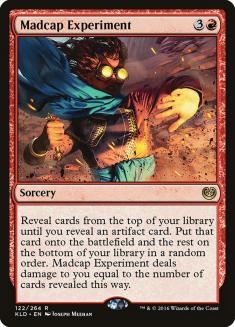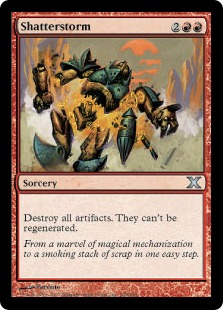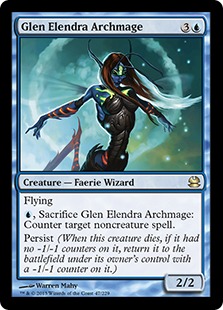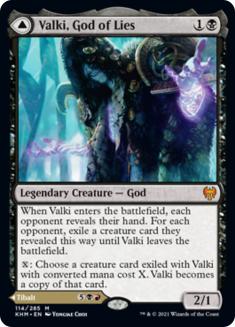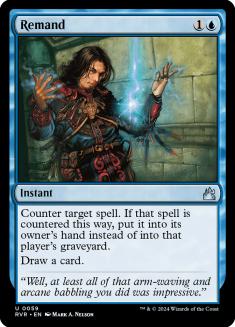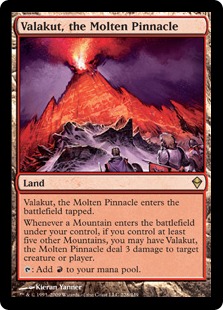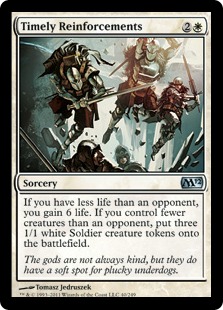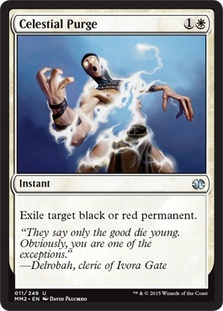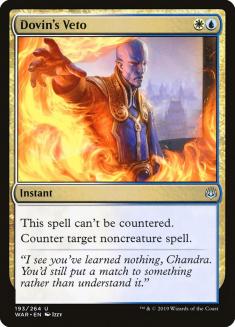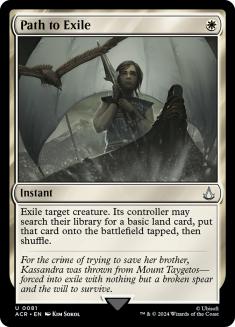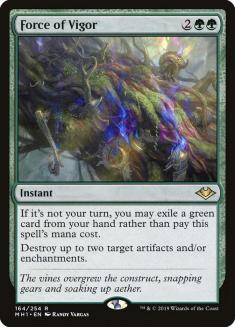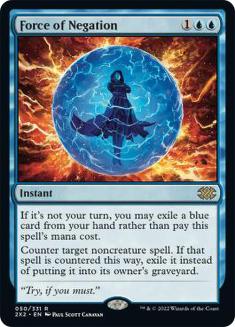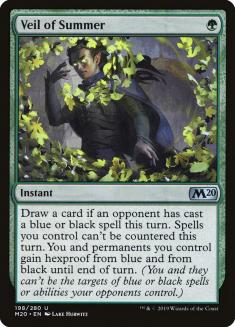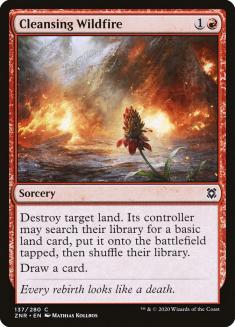Modern tends to be at its best when it’s not leaning toward a Turn 3 format. With the cascade rules change and the banning of Simian Spirit Guide, Modern’s pace is palatable. Considering that Field of the Dead and Mystic Sanctuary were also banned, decks that played longer games also took a hit.
That leaves us with a Modern format where Scapeshift is not only viable, but one of the best things to be doing.
Creatures (3)
Planeswalkers (3)
Lands (28)
Spells (26)

Bring to Light isn’t a card I typically advise folks to play. You get plenty of utility from the tutor aspect, although that usually isn’t worth the issues it causes with your manabase. In this deck specifically, there isn’t even a five-drop worth finding. That takes some of the pressure off the manabase but always means you’re overpaying for whatever you’re searching for.
When compared to a solid, more consistent Temur manabase and playing four Scapeshifts, Bring to Light typically isn’t worth it. However, Bring to Light is one of the few things left in Modern that allows you to abuse Tibalt, Cosmic Impostor. It gives Scapeshift decks a viable backup plan and a powerful sideways strategy against other midrange decks.
The upside is that you don’t have to play many copies of Scapeshift, which is a dead card until you’re finally going to win the game. They’re also useless in multiples, whereas Bring to Light is still a potent threat.
Overall, there are trade-offs but Valki makes Bring to Light worth playing.
Other than Valki and Scapeshift, you’ll typically search for either Supreme Verdict or Omnath, Locus of Creation. Other Scapeshift decks have played things like Hunting Wilds, Hour of Promise, or Mwonvuli Acid-Moss in the past, but you would rarely search for any of those cards rather than Valki or Omnath, so they don’t make the cut anymore.
Bring to Light into Tibalt is one of the best midrange strategies you could employ in Modern. If that’s a large part of your gameplan, I could see wanting to play multiple copies of Valki. You could naturally draw it, which would mostly ruin your plans. The first could die and you’d be unable to search for a second, although in those scenarios, a Scapeshift should win the game. In the end, I chose to only play one Valki and risk drawing it rather than play a second copy. Having two in your deck means you’d draw it more often, which is also a problem.
Playing only one copy of Scapeshift can get you into trouble if you draw it naturally and it gets Thoughtseized, but it’s a rare occurrence. Mystic Sanctuary made everything so easy!
As always, I think people tend to play more Mountains than they need in Scapeshift decks. Ten Mountains is typically sufficient and most of the decklists I’ve seen have twelve or more.
When you’re casting Scapeshift with seven lands, you need to be able to end up with six Mountains on the battlefield alongside Valakut, the Molten Pinnacle. If you play ten Mountains, you would have to draw five of them in order to not be able to deal eighteen damage. Even if you do, you’re only losing three damage for each Mountain you’ve drawn. That situation only matters if you’ve drawn a massive amount of Mountains, your opponent has more than fifteen life, and you need to Scapeshift as soon as possible.
Once you have eight lands, you can search for the second Valakut and deal massive amounts of damage. Playing twelve Mountains gives you the ability to deal more damage, but your opponent is either at eighteen or less because of fetchlands, twenty or higher because of a small amount of lifegain, or a billion because of an infinite combo. There isn’t a matchup where you need to deal 30.
If you expect you’ll have to deal massive amounts of damage to win the game, Scapeshift probably shouldn’t be your end-game.
One of the reasons you’ll see so many Mountains is because players will sideboard things like Anger of the Gods, despite Timely Reinforcements accomplishing most of the same goals while also being easier to cast. Once you remove Anger of the Gods from your deck, it becomes clear that you can function as a Bant deck that lightly touches red for Omnath, Bring to Light, and to have enough Mountains for Scapeshift.
The biggest thing that sets my decklist apart from the others is that I’m leaning into white more than red. You want Path to Exile, Timely Reinforcements, and Supreme Verdict in some numbers already, so why play Lightning Bolt at all? Putting that extra strain on your manabase to have red mana early and often comes with a cost, even if it seems like you’ll have it for free because of the various dual lands and Triomes.
Of course, you need red mana early for Wrenn and Six, but it’s hot take time:
In a deck like Jund Midrange, you have more interaction, so you can protect it easily and ride the card advantage to victory. That’s not the case here. We only need to play enough interaction to buy time until we can win the game and we have to play a high land count in order to function, which means we’ll be drawing fewer spells on average per game anyway.
That means Wrenn won’t be well-protected. If that’s the case, is it worth it?
The counter-argument, which I’m heavily sympathetic to, is that you should treat Wrenn and Six like a quick two-for-one that scales well. If you’re able to cast it early and return a fetchland, and they have to spend a card to kill it, you’re up a card. If you’re able to cast it and return a fetchland, and they have to kill it over two turns with damage, you’re up a card.
You could make the argument that lands aren’t always what you want but that changes a bit once you’re playing multiple Growth Spirals and Explores. Wrenn and Six can also combine with a cycling land to form a slow, albeit powerful, card-drawing engine but it will rarely come up.
Given all that, you can see that my deck is built to ramp into Bring to Light consistently. I’m less interested in playing an attrition game, even if Valki does lead you to play those games occasionally. You could make an argument for playing more spot removal and a second copy of Valki in certain metagames, but even if that scenario came up, I wouldn’t play Wrenn and Six.
We have no shortage of potential options for the sideboard. There are technically five colors of mana in the deck, so we can theoretically do whatever we want. Ideally, the sideboard should be a mix of things that solve the main problems, either through being cheap and allowing us to lower our mana curve or by being a bomb searchable with Bring to Light.
Slaughter Games, Crumble to Dust, Madcap Experiment, Shatterstorm, and Glen Elendra Archmage are reasonable options depending on what’s expected. Thankfully, Omnath and Tibalt solve most fair problems, so we don’t need to solve each problem individually. The rest of Modern consists of decks that are weak to Dovin’s Veto or some mix of Aether Gust or Celestial Purge.
My main issue with Slaughter Games is that it doesn’t win the game outright against the majority of Modern’s current crop of combo decks. You could make a case for it against the Oops All Spells variants but I’d rather have another Cleansing Wildfire.
Crumble to Dust is no longer necessary in a world with Cleansing Wildfire. If the no-land decks didn’t exist, you wouldn’t have much of a reason to play them in high numbers. Since we already want to play multiple Cleansing Wildfires, we’d rather load up on those and draw multiples.
Decks like these have played a singleton Madcap Experiment and Platinum Emperion in the sideboard before but they’ve been mostly outmoded by Omnath. It’s still a defensible package because, like Slaughter Games, it can beat some of the combo decks. Goblin Charbelcher can kill it and then kill you though, so it’s not perfect.
If you care about the Dimir Mill matchup, play a Gaea’s Blessing.
I like Glen Elendra Archmage since it serves multiple purposes. It’s great against both combo and control and won’t get hit by Celestial Purge or Aether Gust in sideboard games like Tibalt would.
Sideboarding
VS Boros Burn
Out:
In:
You certainly have some mediocre cards in this matchup. Remand and Teferi, Time Raveler don’t fare well against decks with low mana curves. At least Teferi can stop a Rift Bolt and soak up some damage whereas you usually can’t afford to spend mana cycling a Remand. Thankfully, Omnath and Timely Reinforcements carry so much in this matchup that you can afford to have some bad cards. Mulligan to a hand that can deal with some early creatures and you should be fine.
When sideboarding against other aggro decks, consider how you’re going to win the game and sideboard accordingly. For example, against Mono-White Equipment (Lurrus), you will want to keep Scapeshift because Colossus Hammer scales higher than Omnath, which means you can’t rely on it as a win condition.
In real life, you might want something that’s able to win the game through infinite life because of Selesnya Company. You can stop them from winning with spot removal and eventually deal massive amounts of damage with Omnath, Tibalt, and Valakut, so winning on Magic Online is easy enough.
VS Rakdos Death’s Shadow (Lurrus)
Out:
In:
This matchup is tricky because they can function like Burn or Jund and you never know how their draw is going to line up. I like trying to slow them down with spot removal while also being conscious of winning long games.
If it seems like they are leaning toward trying to disrupt you rather than beat you down, you can cut a land. Either way, expect some Blood Moons.
Both Scapeshift and Valki are solid options here.
VS Azorius Control
Out:
In:
Azorius Control is another deck that seems great at the moment. Their planeswalkers are scary and they have a wall of countermagic, which isn’t the ideal matchup. Thankfully, they will get severely punished if they try to resolve a Jace, the Mind Sculptor or Teferi, Hero of Dominaria, so you have an edge there.
Play draw-go, make your land drops, and prepare for some big counter wars.
VS Five-Color Control
Out:
In:
The mirror plays out similarly to the Azorius Control matchup.
I don’t bring in Celestial Purge here even though it tags Wrenn and Six and Tibalt because it’s dead otherwise. Maybe they keep in Omnath and you have more targets but Aether Gust is better overall.
VS Jund Midrange
Out:
In:
Shaving a land in this matchup makes sense since the games will often come down to attrition. You should only need one Valakut to win the game, so it’s the easiest cut.
I don’t mind Timely Reinforcements in this matchup and will happily keep in a copy on the draw.
VS Belcher
Out:
In:
Decks like this and Dredge make me seriously consider a third copy of Force of Negation. Aggressively mulligan for Cleansing Wildfire or a counterspell.
VS Mono-Green Tron
Out:
In:
Valki isn’t great against Tron but we’re short on relevant sideboard cards and it can fight through hard-cast Wurmcoil Engines and Thragtusks if you’re able to keep them off Tron.
Five-Color Control might not be the absolute best deck in Modern but a good control deck with a combo finish has the tools to beat anyone. In a wide-open metagame, especially when the format is trying to get its footing after some massive shakeups, it’s a very good choice. You have a fast and consistent combo kill plus the tools to play a solid midrange game, and are difficult to sideboard against.
What else could you want?

